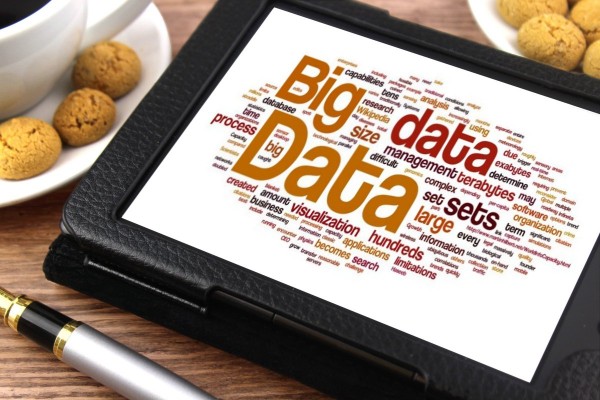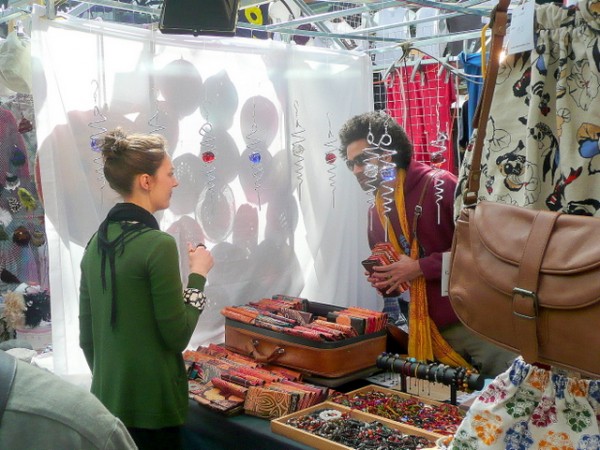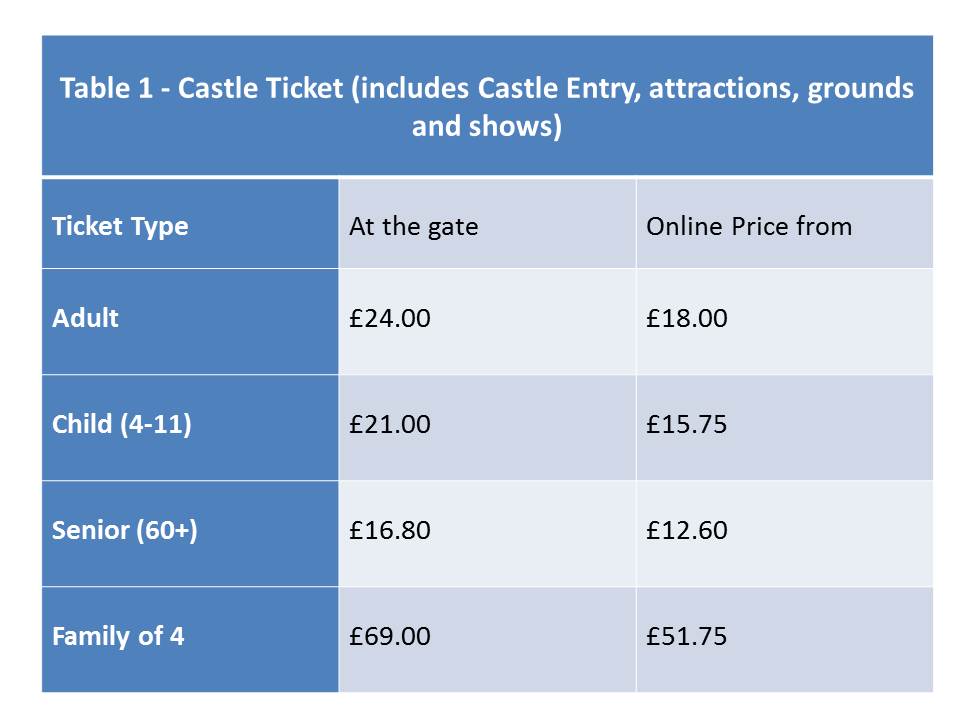 In September 2023, the Stonegate Group, the largest pub company in the UK with around 4,500 premises, announced that it was going to start increasing the pint of beer by 20p during busy periods. There was an immediate backlash on social media with many customers calling on people to boycott Stonegate’s pubs such as the Slug & Lettuce and Yates.
In September 2023, the Stonegate Group, the largest pub company in the UK with around 4,500 premises, announced that it was going to start increasing the pint of beer by 20p during busy periods. There was an immediate backlash on social media with many customers calling on people to boycott Stonegate’s pubs such as the Slug & Lettuce and Yates.
This announcement is an example of dynamic pricing, where firms with market power adjust prices relatively quickly in response to changing market conditions: i.e. to changes in demand and supply.
Traditionally, prices set by firms in most retail markets have been less flexible. They may eventually adjust to changing market conditions, but this could take weeks or even months. If a product proves to be popular on a particular day or time, firms have typically left the price unchanged with the item selling out and customers facing empty shelves. If the product is unpopular, then the firm is left with unsold stock.
One business that makes extensive use of dynamic pricing is Amazon. Prices for popular items on Amazon Marketplace change every 10 minutes and can fluctuate by more than 20 per cent in just one hour.
Conditions for dynamic pricing to operate
The Amazon example helps to illustrate the conditions that must be in place for a firm to implement dynamic pricing successfully. These include:
- The capacity to collect and process large amounts of accurate real-time data on the demand for and supply of particular items i.e. the number of sales or the interest in the product.
- The ability to adjust prices in a timely manner in response to changing market conditions indicated by the data.
- Effectively communicating the potential advantages of the pricing strategy to consumers.
Consumer attitudes
 The last point is an interesting one. As the Stonegate example illustrates, consumers tend to dislike dynamic pricing, especially when price rises reflect increases in demand. A previous article on this website discussed the unpopularity of dynamic pricing amongst fans in the ticket market for live musical events.
The last point is an interesting one. As the Stonegate example illustrates, consumers tend to dislike dynamic pricing, especially when price rises reflect increases in demand. A previous article on this website discussed the unpopularity of dynamic pricing amongst fans in the ticket market for live musical events.
The precise reason for the increase in demand, can also have an impact on consumer attitudes. For example, following a mass shooting at a subway station in New York in April 2022, the authorities shut down the underground system. This led to a surge in demand for taxis and this was picked up by the algorithm/software used by Uber’s dynamic pricing system. Fares for Uber cars began to rise rapidly, and people started to post complaints on social media. Uber responded by disabling the dynamic pricing system and capping prices across the city. It also announced that it would refund customers who were charged higher prices after the subway system shut down.
There is a danger for businesses that if they fail to communicate the policy effectively, annoyed customers may respond by shopping elsewhere. However, if it is implemented successfully then it can help businesses to increase their revenue and may also have some advantages for consumers.
The growing popularity of dynamic pricing
 It has been widely used in airline and hotel industries for many years. Robert Cross, who chairs a revenue management company predicts that ‘It will eventually be everywhere’.
It has been widely used in airline and hotel industries for many years. Robert Cross, who chairs a revenue management company predicts that ‘It will eventually be everywhere’.
More businesses in the UK appear to be using dynamic pricing. In a consumer confidence survey undertaken for Barclays in September 2023, 47 per cent of the respondents had noticed more examples of companies raising prices for goods/services in response to higher demand at peak times.
It has traditionally been more difficult for bricks-and-mortar retailers to implement dynamic pricing because of the costs of continually changing prices (so-called ‘menu costs’). However, this might change with the increasing use of electronic shelf labels.
It will be interesting to see if dynamic pricing becomes more widespread in the future or whether opposition from consumers limits its use.
Articles
Questions
- Explain the difference between surge and dynamic pricing.
- Using a diagram, explain how dynamic pricing can increase a firm’s revenue.
- Discuss both the advantages and disadvantages for consumers of firms using dynamic pricing.
- How might dynamic pricing influence consumer behaviour if it alters their expectations about future price changes.
- There is some evidence that the use of dynamic pricing is less unpopular amongst 18–24-year-olds than other age groups. Suggest some possible reasons why this might be the case.
- Using the concept of loss aversion, consider some different ways that a business could present a new dynamic pricing policy to its customers.
 A number of famous Business Schools in the UK and US such as MIT Sloan, NYU Stern and Imperial College have launched new programmes in business analytics. These courses have been nicknamed ‘Big Data finishing school’. Why might qualifications in this area be highly valued by firms?
A number of famous Business Schools in the UK and US such as MIT Sloan, NYU Stern and Imperial College have launched new programmes in business analytics. These courses have been nicknamed ‘Big Data finishing school’. Why might qualifications in this area be highly valued by firms?
Employees who have the skills to collect and process Big Data might help firms to successfully implement a pricing strategy that approaches first-degree price discrimination.
First-degree price discrimination is where the seller of a product is able to charge each consumer the maximum price he or she is prepared to pay for each unit of the product. Successfully implementing this type of pricing strategy could enable a firm to make more revenue. It might also lead to an increase in economic efficiency. However, the strategy might be opposed on equity grounds.
In reality, perfect price discrimination is more of a theoretical benchmark than a viable pricing strategy. Discovering the maximum amount each of its customers is willing to pay is an impossible task for a firm.
It may be possible for some sellers to implement a person-specific pricing strategy that approaches first-degree price discrimination. Firms may not be able to charge each customer the maximum amount they are willing to pay but they may be able to charge different prices that reflect customers’ different valuations of the product.
 How could a firm go about predicting how much each of its customers is willing to pay? Traditionally smaller sellers might try to ‘size up’ a customer through individual observation and negotiation. The clothes people wear, the cars they drive and their ethnicity/nationality might indicate something about their income. Second-hand car dealers and stall-holders often haggle with customers in an attempt to personalise pricing. The starting point of these negotiations will often be influenced by the visual observations made by the seller.
How could a firm go about predicting how much each of its customers is willing to pay? Traditionally smaller sellers might try to ‘size up’ a customer through individual observation and negotiation. The clothes people wear, the cars they drive and their ethnicity/nationality might indicate something about their income. Second-hand car dealers and stall-holders often haggle with customers in an attempt to personalise pricing. The starting point of these negotiations will often be influenced by the visual observations made by the seller.
The problem with this approach is that observation and negotiation is a time-consuming process. The extra costs involved might be greater than the extra revenue generated. This might be especially true for firms that sell a large volume of products. Just imagine how long it would take to shop at a supermarket if each customer had to haggle with a member of staff over each item in their supermarket trolley!! There is also the problem of designing compensation contracts for sales staff that provide appropriate incentives.
However the rise of e-commerce may lead to a very different trading environment. Whenever people use their smart phones, laptops and tablets to purchase goods, they are providing huge amounts of information (perhaps unconsciously) to the seller. This is known as Big Data. If this information can be effectively collected and processed then it could be used by the seller to predict different customers’ willingness to pay.
Some of this Big Data provides information similar to that observed by sellers in traditional off-line transactions. However, instead of visual clues observed by a salesperson, the firm is able to collect and process far greater quantities of information from the devices that people use.
For example, the Internet Protocol (IP) address could be used to identify the geographical location of the customer: i.e. do they live in a relatively affluent or socially deprived area? The operating system and browser might also indicate something about a buyer’s income and willingness to pay. The travel website, Orbitz, found that Apple users were 40 per cent more likely to book four or five star hotel rooms than customers who used Windows.
Perhaps the most controversial element to Big Data is the large amount of individual-level information that exists about the behaviour of customers. In particular, browsing histories can be used to find out (a) what types of goods people have viewed (b) how long they typically spend on-line and (c) their previous purchase history. This behavioural information might accurately predict price sensitivity and was never available in off-line transactions.
Interestingly, there has been very little evidence to date that firms are implementing personalised pricing on the internet. One possible explanation is that effective techniques to process the mass of available information have not been fully developed. This would help to explain the growth in business analytics courses offered by universities. PricewaterhouseCoopers recently announced its aim to recruit one thousand more data scientists over the next two years.
Another possible explanation is that firms fear a backlash from customers who are deeply opposed to this type of pricing. In a widely cited survey of consumers, 91% of the respondents believed that first-degree price discrimination was unfair.
Articles
Big data is coming for your purchase history – to charge you more money The Guardian, Anna Bernasek and DT Mongan (29/5/15)
Big data is an economic justice issue, not just a Privacy Problem The Huffington Post, Nathan Newman (16/5/15)
MIT’s $75,000 Big Data finishing school (and its many rivals) Financial Times, Adam Jones (20/3/16)
The Government’s consumer data watchdog New York Times, Natasha Singer (23/5/2015)
The economics of big data and differential pricing The Whitehouse blog, Jason Furman, Tim Simcoe (6/2/2015)
Questions
- Explain the difference between first- and third-degree price discrimination.
- Using an appropriate diagram, explain why perfect price discrimination might result in an economically more efficient outcome than uniform pricing.
- Draw a diagram to illustrate how a policy of first-degree price discrimination could lead to greater revenue but lower profits for a firm.
- Why would it be so difficult for a firm to discover the maximum amount each of its customers was willing to pay?
- Explain how the large amount of information on the individual behaviour of customers (so-called Big Data) could be used to predict differences in their willingness to pay.
- What factors might prevent a firm from successfully implementing a policy of personalised pricing?
 Recent reports in the media have included headlines such as “Sexist surcharge” and “Pink premium?” Various claims have been made that women pay significantly higher prices for similar products than men.
Recent reports in the media have included headlines such as “Sexist surcharge” and “Pink premium?” Various claims have been made that women pay significantly higher prices for similar products than men.
The Times newspaper recently published the results from an investigation it carried out on the prices of hundreds of similar products that were marketed at both men and women. The study found that those products marketed at women cost 37% more on average than similar versions that were marketed at men. Examples included:
- Disposable razors: Tesco priced a packet of five of its own-brand disposable razors for women at £1. The key characteristic that targeted the razors at female customers was the colour – they were pink. For the same price, a packet targeted at male customers (i.e. they were blue) contained 10 disposable razors.
- Ballpoint pens: Staples priced a packet of five pastel-coloured Bic pens marketed ‘for her’ at £2.99. A packet of five Bic pens that were not in the ‘for her’ range (i.e. they had transparent barrels) were priced at £1.98.
- Scooters: Argos increased the price of a child’s scooter by £5 if it was pink instead of blue.
Maria Miller, the chair of the Women and Equalities Select Committee, stated that:
“It is unacceptable that women face higher costs for the same product just because they are targeted at women. Retailers have got to explain why they do this.”
A more detailed study carried out by New York City’s Department of Consumer Affairs was published in December 2015. Average prices were collected for 794 individual items across 5 different industries. The key findings were that products marketed at women were:
- 7 per cent more for toys and accessories
- 4 per cent more for children’s clothing
- 8 per cent more for adult clothing
- 13 per cent more for personal care products
- 8 per cent more for health products
Interestingly whereas the investigation in the UK only found examples of women paying higher prices than men, the New York study found some goods where the price was higher for men.
Reports in the media have claimed that this is clear evidence of price discrimination. Although this is likely to be true, it is impossible to say for certain without more detailed information on costs.
For example, when referring to the higher price for the razors marketed at women in the UK study, Richard Hyman, an analyst at RAH Advisory, stated that:
“the packaging will be different and they will sell fewer so it could be to do with the volume”
If economies of scale and the different costs of packaging can fully account for the difference in prices between the razors then it is not an example of price discrimination.
Articles
Questions
- Define price discrimination.
- Outline and explain the three different categories of price discrimination.
- Could a situation where a firms charges all of its customers the same price for a good or service ever be classed as an example of price discrimination?
- A firm with market power may still not be able to successfully implement a policy of price discrimination. Explain why.
- Under what circumstances could price discrimination improve allocative efficiency?
 One type of market failing is the asymmetric information between producers and consumers. Advertising, branding and marketing can either help to reduce consumers’ limited information or play on ignorance to mislead consumers.
One type of market failing is the asymmetric information between producers and consumers. Advertising, branding and marketing can either help to reduce consumers’ limited information or play on ignorance to mislead consumers.
Misleading consumers is what the pharmaceutical company Reckitt Benckiser is accused of doing with its Nurofen brand of painkillers. There are very few types of painkiller – the most common three being paracetamol, ibuprofen and aspirin. These are sold cheaply in chemists as unbranded ‘generic products’. Or you can buy much more expensive branded versions of the same drugs. Many people believe that the branded versions are more effective as they are cleverly marketed.
Reckitt Benckiser has been found guilty by the Australian federal court of deceiving consumers. The company produces various varieties of Nurofen, each claiming to target a particular type of pain. But Nurofen Back Pain, Nurofen Period Pain, Nurofen Migraine Pain and Nurofen Tension Headache are in fact identical! And in many outlets, they were sold at different prices – a form of price discrimination reflecting the strength of demand by consumers for a particular type of pain relief.
 And now the UK Advertising Standards Authority is investigating the company over whether its adverts for Nurofen Express are misleading by stating that the product ‘gives you faster headache relief than standard paracetamol or ibuprofen’. Also it is investigating the company’s claim that its products directly target muscles in the head. Both Nurofen Migraine Pain and Nurofen Tension Headache claim on the front of the box to provide ‘targeted rapid relief’.
And now the UK Advertising Standards Authority is investigating the company over whether its adverts for Nurofen Express are misleading by stating that the product ‘gives you faster headache relief than standard paracetamol or ibuprofen’. Also it is investigating the company’s claim that its products directly target muscles in the head. Both Nurofen Migraine Pain and Nurofen Tension Headache claim on the front of the box to provide ‘targeted rapid relief’.
The company adopts similar practices in its combined pain-killer and decongestant drugs for relieving cold symptoms. For example, its Nurofen Cold and Flu Relief, Nurofen Day and Night Cold and Flu, Nurofen Sinus and Blocked Nose and Nurofen Sinus Pain Relief all contain the same quantities of ibuprofen and the decongestant phenylephrine hydrochloride, but each claims to do something different.
So there are various issues here. The first is whether excessive profits are made by charging a price typically 3 to 4 times greater than the identical generic version of the drug; the second is whether the company deliberately misleads consumers by claiming that a particular version of the drug targets a particular type of pain; the third is whether ‘faster acting’ versions are significantly different; the fourth is whether price discrimination is being practised.
Articles
Nurofen maker Reckitt Benckiser suffers advertising headaches Financial Times, Robert Cookson and Scheherazade Daneshkhu (15/12/15)
Nurofen Express advertising claims probed by UK watchdog BBC News (15/12/15)
ASA probing ‘misleading’ painkiller claims in advert by drug firm behind Nurofen The Telegraph, Tom Morgan and agency (15/12/15)
The great painkiller con: Top drug brands accused of huge mark-ups and misleading claims Mail Online, Sean Poulter and John Naish (16/12/15)
Nurofen Under Investigation By UK Watchdog Over Claims Advert ‘Misled’ Customers Huffington Post, Natasha Hinde (15/12/15)
Australian Competition & Consumer Comission media release
Court finds Nurofen made misleading Specific Pain claims ACCC (14/12/15)
Questions
- Is price discrimination always against the consumer’s interests?
- What form of price discrimination is being practised in the case of Nurofen?
- How, do you think, does Reckitt Benckiser decide the prices it charges retailers for its pain killers and how, do you think, do retailers determine the price they charge consumers for them?
- Is it a reasonable assumption that branded products in most cases are better than own-brand or generic versions? How is behavioural theory relevant here?
- If Reckitt Benckiser were banned from using the word ‘targets’ when referring to one of its product’s effect on particular type of pain, could the company instead use the words ‘suitable for’ relieving a particular type of pain and thereby avoid misleading consumers?
- What is the best way of improving consumer knowledge about particular types of over-the-counter drugs and their effects on the body?
- Comment on the following statement by Dr Aomesh Bhatt, the company’s medical affairs director: ‘The Nurofen specific-pain range was launched with an intention to help consumers navigate their pain relief options, particularly within the grocery environment where there is no healthcare professional to assist decision making.’
 Merlin Entertainments PLC is one of the largest operator of visitor attractions in the world and owns over a third of the most popular theme parks in Europe. It runs the four most visited parks in England – Alton Towers, Legoland Windsor, Thorpe Park and Chessington World of Adventures as well as the most popular theme park in Italy – Gardaland. Alton Towers alone had 2.5 million visitors in 2013. Anybody thinking of going to one of these attractions is faced with a wide range of different entry fees .
Merlin Entertainments PLC is one of the largest operator of visitor attractions in the world and owns over a third of the most popular theme parks in Europe. It runs the four most visited parks in England – Alton Towers, Legoland Windsor, Thorpe Park and Chessington World of Adventures as well as the most popular theme park in Italy – Gardaland. Alton Towers alone had 2.5 million visitors in 2013. Anybody thinking of going to one of these attractions is faced with a wide range of different entry fees .
Theme parks and tourist attractions have market power so their owners have to make some interesting pricing decisions. They have to tackle the same dilemma that confronts any seller that faces a downward sloping demand curve for its goods/services.
One option for the firm would be to increase the entry fee. This would produce higher profits per visitor as some of the surplus from the transaction previously enjoyed by the consumer will be extracted by the seller and converted into producer surplus. Unfortunately for the business the higher price, all other things equal, will also result in fewer visitors. Some people will be deterred from visiting because of the higher price and the seller will lose out on potential revenue.
An alternative strategy would be for the theme park to reduce its entry fee. All other things equal, this will increase the number of visitors. However, it would also mean that the profit per customer would fall. The frustrating issue for the seller is that some of its customers, who would still have visited the attraction at the higher price, are now able to get a better deal.
This dilemma exists if the seller has to charge all of its different customers the same entry fee. If it could charge a higher entry fee to those customers who would be willing to pay more and a lower entry fee to those who would be willing to pay less then it could make more money. Extra revenue could be obtained from those additional sales that take place at the lower price while more consumer surplus could be extracted from those still paying the higher price.
Is it possible for a firm to charge different prices to different customers for the same or a similar good or service? Table 1 below shows the entry fees for Warwick Castle, another tourist attraction owned by Merlin Entertainments PLC.

It can immediately be seen from this table that some groups of customers pay a different entry fee from others. For example adults have to pay £24 to enter on the day while people aged 60 and over pay a lower price £16.80. The entry fee for children aged between 4 and 11 is £21.00 while those aged 3 and under go for free. Students aged 16-18 can gain entry for a price of £13.50 if they can provide valid ID and purchase the tickets from the visitbritainshop website.
In this example, the company has allocated people into different categories by age (i.e. senior, adult, student, older children and younger children) and has set the entry fee that customers in each group have to pay.

The table also shows that if customers purchase on- line then they can get the tickets more cheaply. The entry fee for each category is 25% lower if the ticket is booked seven days in advance i.e. the prices shown in the last column in the table. If the booking is made between 2-6 days in advance then the discount is only 10% i.e. an adult ticket would cost £21.60. The on-line discounts are open to everyone. People are given the choice to either book on-line in advance or pay on the day. This is different from a situation where you are placed into a category by the firm. For example the customer cannot choose whether they are over 60!
If people are prepared to spend more time searching on the internet then other cheaper prices can also be obtained. Once again these offers are open to anyone willing to spend the time and effort in order to find them.
All the ticket prices above give people access to exactly the same attractions on the day. They do not give the visitor access to two of the attractions at the castle – the Dragon Tower and Castle Dungeon. Entry to the Dragon Tower would cost an adult on the day an extra £1.80 while entry to the Castle Dungeon would cost an extra £5.40.
Warwick Castle Ticket Prices Warwick Castle (accessed on 04/09/14)
Alton Towers Alton Towers (accessed on 08/09/14)
Warwick Castle Tickets visitbritainshop (accessed on 02/09/14)
Global Attractions Attendance Report teaconnect (accessed on 05/09/14)
Merlin Entertainments Merlin Entertainments (accessed on 08/09/14)
Questions
- What pricing decisions do firms have to make if they operate in a perfectly competitive market?
- Explain why an individual tourist attraction will have a downward sloping demand curve
- Paying an entry fee and an extra payment per attraction is known as what type of pricing? What advantages does this type of price strategy have for the seller?
- How would you calculate the profit per customer? What factors other than the entrance fee would determine the profit made per customer in a theme park or tourist attractions?
- Paying a different price depending on which category you have been assigned to by the seller is known as what type of pricing strategy? Can this type of pricing strategy ever be in the interests of society?
- In the example used in the case, customers are assigned to different categories by age. Can you think of any other ways that firms could categorise their customers?
- Given the category customers have been assigned to they can pay different prices depending on whether they buy the tickets on line. What is the price strategy called when customers can choose from a variety of pricing options for the same or similar product? Can you think of any different methods that could be used by the seller to carry out this type of pricing strategy?
 In September 2023, the Stonegate Group, the largest pub company in the UK with around 4,500 premises, announced that it was going to start increasing the pint of beer by 20p during busy periods. There was an immediate backlash on social media with many customers calling on people to boycott Stonegate’s pubs such as the Slug & Lettuce and Yates.
In September 2023, the Stonegate Group, the largest pub company in the UK with around 4,500 premises, announced that it was going to start increasing the pint of beer by 20p during busy periods. There was an immediate backlash on social media with many customers calling on people to boycott Stonegate’s pubs such as the Slug & Lettuce and Yates. The last point is an interesting one. As the Stonegate example illustrates, consumers tend to dislike dynamic pricing, especially when price rises reflect increases in demand. A previous article on this website discussed the unpopularity of dynamic pricing amongst fans in the ticket market for live musical events.
The last point is an interesting one. As the Stonegate example illustrates, consumers tend to dislike dynamic pricing, especially when price rises reflect increases in demand. A previous article on this website discussed the unpopularity of dynamic pricing amongst fans in the ticket market for live musical events.  It has been widely used in airline and hotel industries for many years. Robert Cross, who chairs a revenue management company predicts that ‘It will eventually be everywhere’.
It has been widely used in airline and hotel industries for many years. Robert Cross, who chairs a revenue management company predicts that ‘It will eventually be everywhere’.






